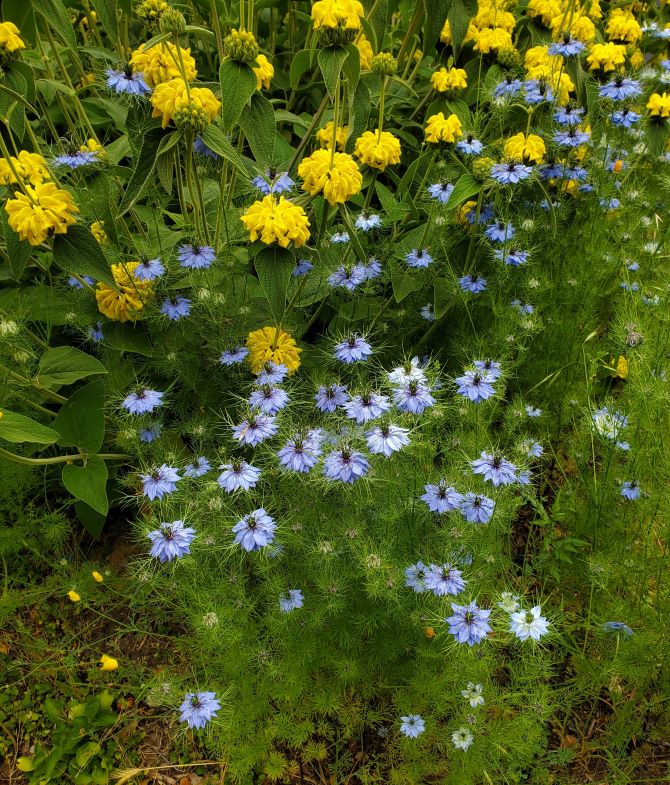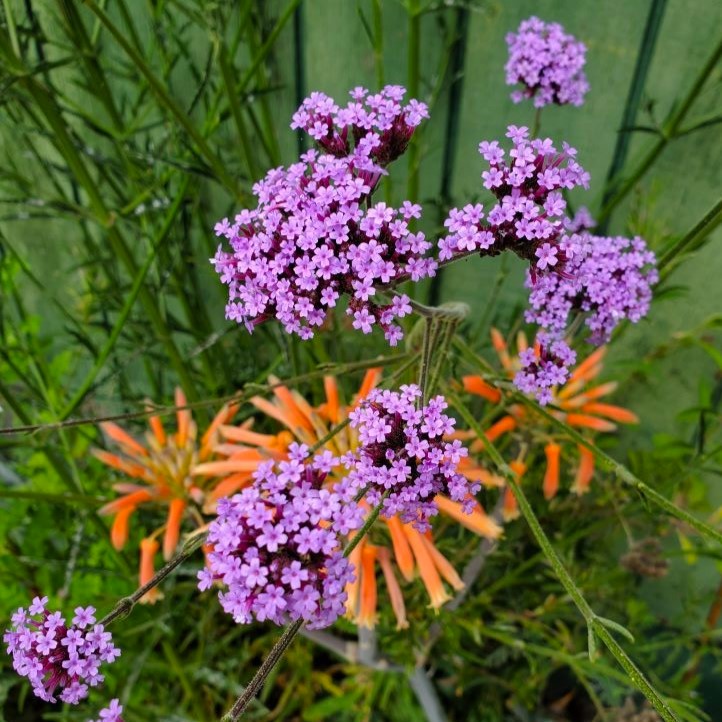Gardening: In Praise of Spreaders, Fillers, and Colonizers
By Josh Reilly
Some garden plants are a bit weedy. Indelicate and misbehaved, they sometimes “don’t play well with others.” Some of them will crowd and shade out other garden favorites. Native plant enthusiasts fear more catastrophic, apocalyptic outcomes, and in several notable cases, they are right. Miles of California riparian corridors are now choked with English Ivy, (Hedera sp). Ubiquitous and brutally tenacious, it provides superb harborage for rats, snails, and other deplorables. Once established, it creates a monotonous, unstable green “junkyard” where diversity, rare species, and ancient ecological balances are mostly lost. Best to avoid altogether English Ivy and its sisters in crime, Swedish ivy, Scotch Broom, Himalayan blackberries, Acacia, and the many annual European brome grasses that dominate our hillsides. This last group, the annual bromes, was brought to the American West by the Spanish, to feed their cattle and horses. How they failed to notice that California was already completely covered with abundant grasses, I cannot explain. The rest were all brought here by the nursery trade as ornamentals for American gardens. Lacking natural enemies and pests, they blew right over the garden fence and colonized the New World.
Yet, there is a place for “weedy” spreaders, the stoic foot soldiers, fillers, and backdrops that thrive on your disinterest. Once you get over seeing them everywhere, they are easy to love, adaptable, vigorous, and hardy. Like The Dude, they abide. Many are uninteresting to gophers and deer, or so prolific it doesn’t matter. Some, such as Euphorbia, are toxic. Euphorbia produces an irritating white sap that may cause a human skin rash and seems to dissuade gophers. All are spread by means of abundant viable seed and/or rhizomes. They provide a backdrop against which your star players shine. Their abundance, once established, and long bloom times, knit your design together across seasonal changes. They provide continuity when restlessness, curiosity, and impatience drive you to delete the old and add the new. Unless your garden is somehow defoliated, you will not have to plant these spreaders more than once.



Here are a few favorite perennial spreaders from among the dozens available.
Jupiter’s Beard, aka Red or False Valerian, is a big, blowsy perennial that blithely tolerates compacted, dry, and unimproved soil. Re-seeding heavily, it produces large tufts of dusty red, pink, or white blossoms, on 1 to 3 foot shoots. After a rain, it emits a faint dank odor, a feature that discourages some gardeners, but may also discourage deer and gophers. Cut it to the crown twice each year for repeat blooming.
Peruvian Lily, aka Alstroemeria, is a source of effortless beauty. Years ago, I planted a few clumps in poor soil along a gravel path. Now I have an exuberant row of orange, coffee, and white blooms from May until the first Winter frost. Peruvian Lily, alas, is deer candy. Plant it in a protected spot. Cut it to the ground in Winter.
Myrtle spurge (Euphorbia sp) tumbles and sprawls happily, shoots tipped with festive yellow blossoms, starting in late Winter. It throws seed everywhere. I planted one about 6 years ago. Now I have about 10.
No Valley garden should be without Pacific Coast Hybrid and Douglas Irises, naturalized in a shady part of your garden. Divide them in September every 3 to 5 years to rejuvenate.
Often thought of as annuals, California poppies are actually biennials, living for at least two years and flowering twice each year. Cut them back to the ground in July when they get gray and woody. By August you’ll have new foliage with a full head of blossoms. The foliage and stems make superb compost.
Don’t forget annuals that reseed freely, such as Love in A Mist (Nigella sp.), poppies (Papaver sp), Borage, Verbena, and Morning Glory. Cast seed in late Winter and enjoy blossoms for years to come.
Josh Reilly, aka Uncle Skip, writes about seasonal gardening from his home in beautiful Ben Lomond, California.
Photos by Josh Reilly | Featured photo; Purpletop Vervain (Verbena bonariensis)
The San Lorenzo Valley Post is your essential guide to life in the Santa Cruz Mountains. We're dedicated to delivering the latest news, events, and stories that matter to our community. From local government to schools, from environmental issues to the arts, we're committed to providing comprehensive and unbiased coverage. We believe in the power of community journalism and strive to be a platform for diverse voices.





